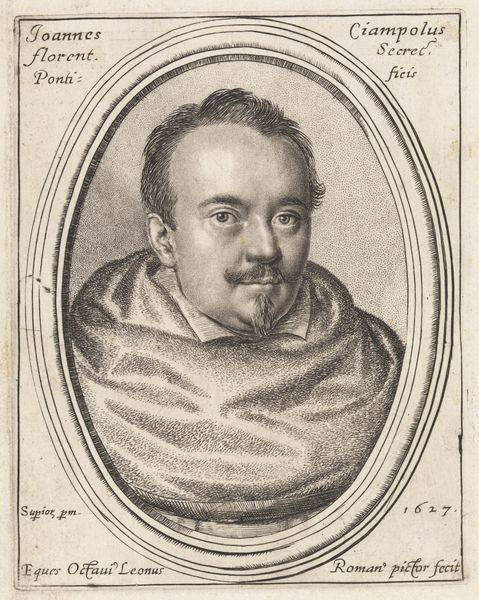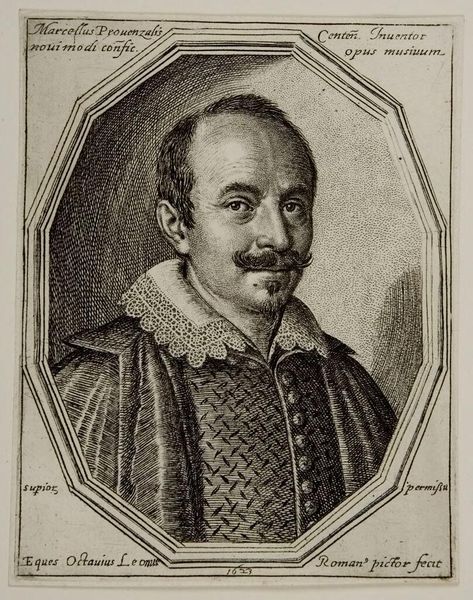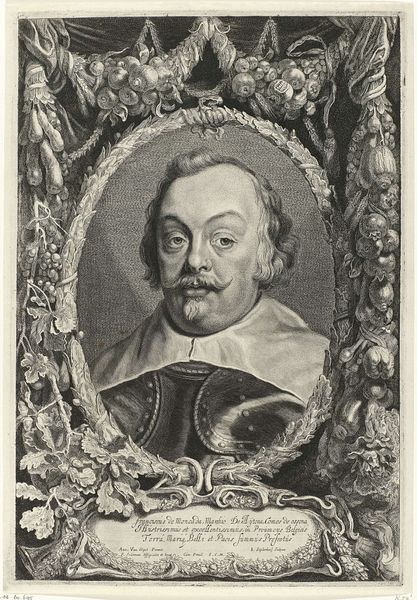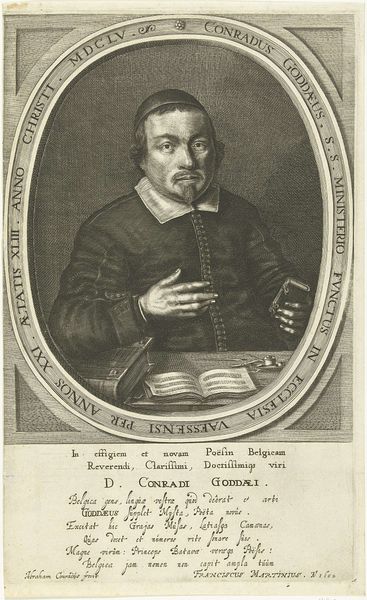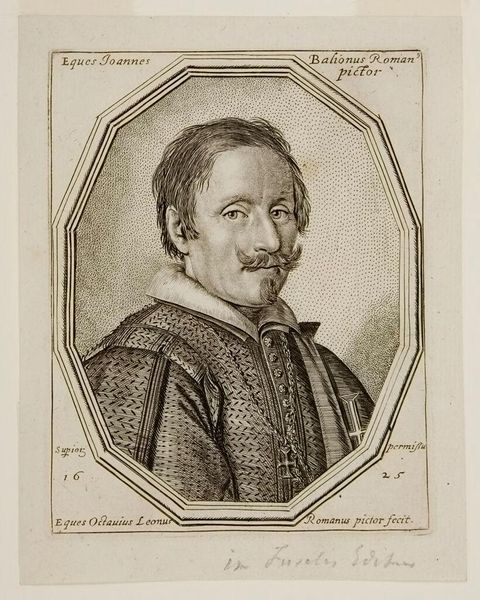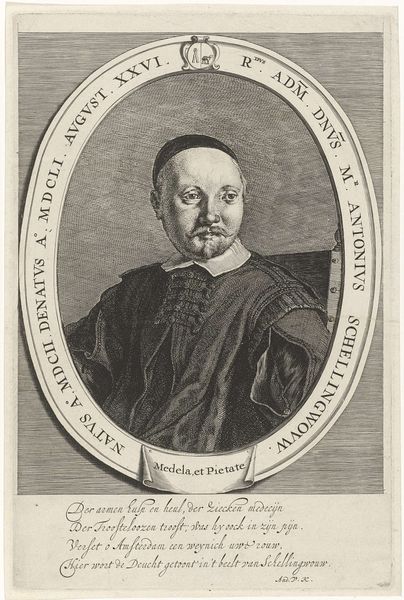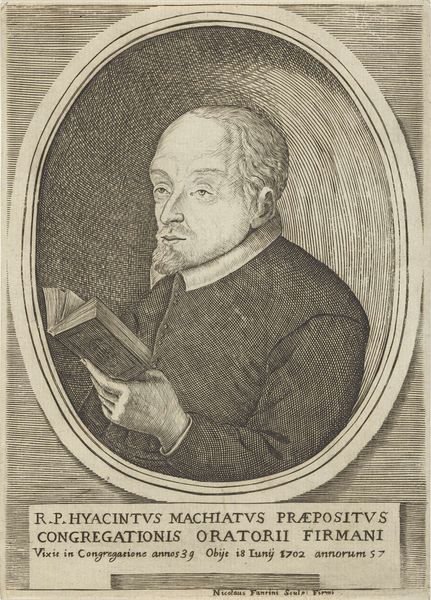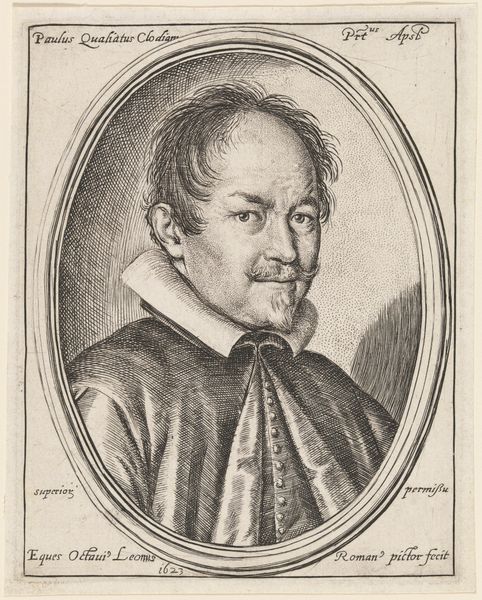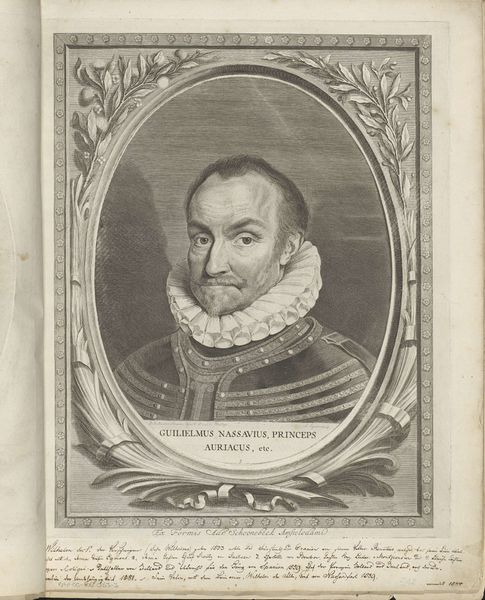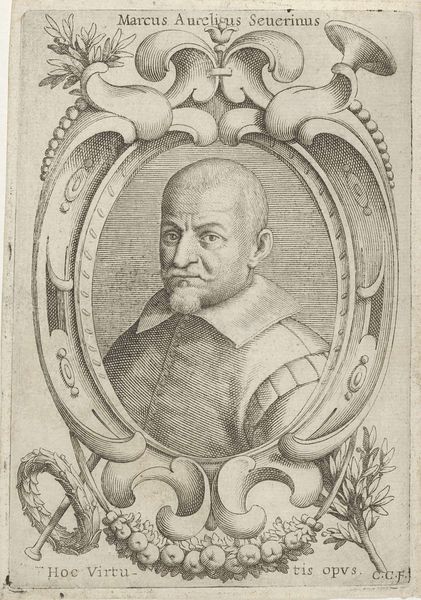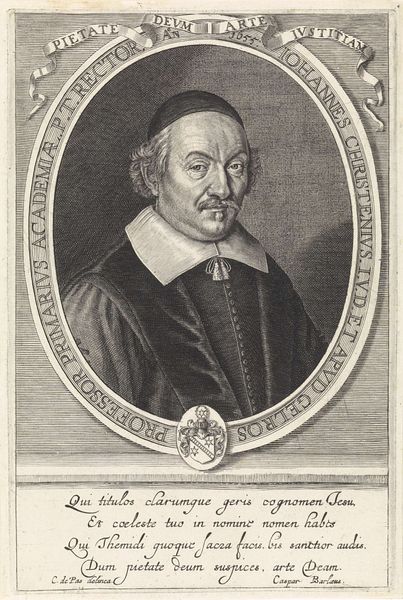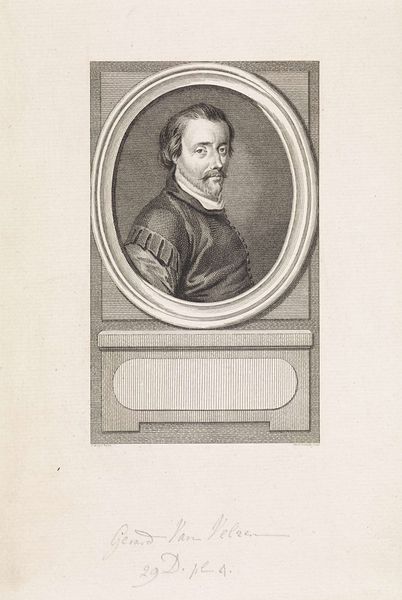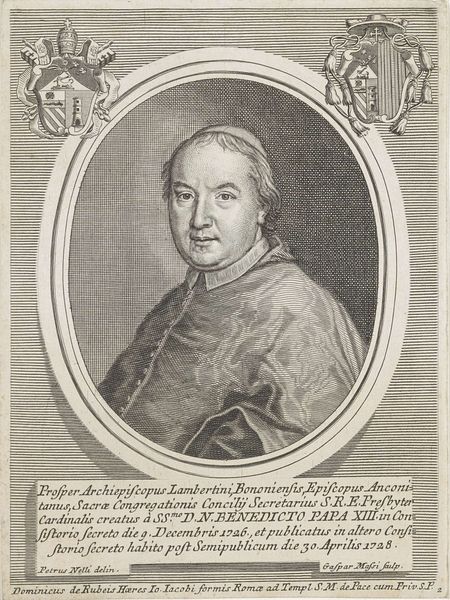
Giovanni Ciampoli c. 17th century
Copyright: CC0 1.0
Editor: This is Ottavio Leoni's portrait of Giovanni Ciampoli, made in 1627. It feels very formal, but also intimate. What does this portrait tell us about Ciampoli's role in society? Curator: Leoni's portrait provides insight into the social and intellectual circles of the time. Ciampoli was a secretary and close confidant of Pope Urban VIII, a position that granted him influence and power. The portrait, commissioned or approved by Ciampoli himself, served as a carefully constructed image of a man of intellect and status. Editor: So it was about projecting power? Curator: Exactly. Consider how such portraits functioned in the highly stratified society of 17th-century Rome. Who had access to these images? What message did they convey about the sitter's standing within the papal court and the broader cultural landscape? Editor: I hadn't thought about the audience. It really does change how you see it. Curator: Indeed. It reveals how art actively shaped perceptions of power and influence during this period.
Comments
No comments
Be the first to comment and join the conversation on the ultimate creative platform.
